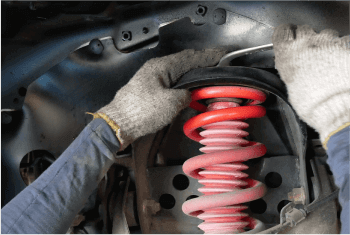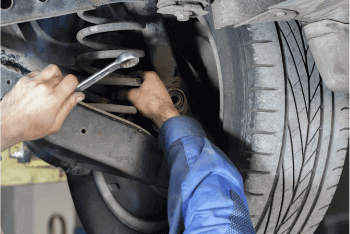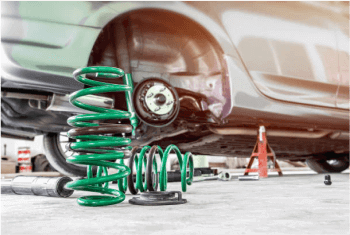Suspension
When you need it the most.
Suspension is the system that connects a vehicle to its wheels and allows relative movement between them. It includes tyres, tyre air, bumpers, shock absorbers, and linkages. Suspension systems must accommodate both road holding and ride quality, which is mutually exclusive.
The suspension system’s main responsibilities include optimizing tyre contact with the road surface, providing steering accuracy and excellent handling, bearing the weight of the vehicle (including the frame, engine, and body) uniformly, and maintaining passenger satisfaction by absorbing and damping shock. When compared to other main vehicle components, your car’s suspension system works to overcome a significant amount of stress.
The goals of a suspension system are to eliminate road shocks from the transmission to vehicle components, achieve good road holding while driving, cornering, and braking, maintain proper steering geometry, achieve a specific height to body structure, resist torque and braking reactions, maintain vehicle stability while traveling over rough terrain or when turning in order to minimize the rolling, pitching, or vertical movement tendency, and to keep the body perfectly in level while traveling over rough and uneven ground. However, the rear portion of a vehicle is subjected to most road shocks, so the basic function of it is to absorb the same and then transmit them to the body structure which is least affected by these shocks.




